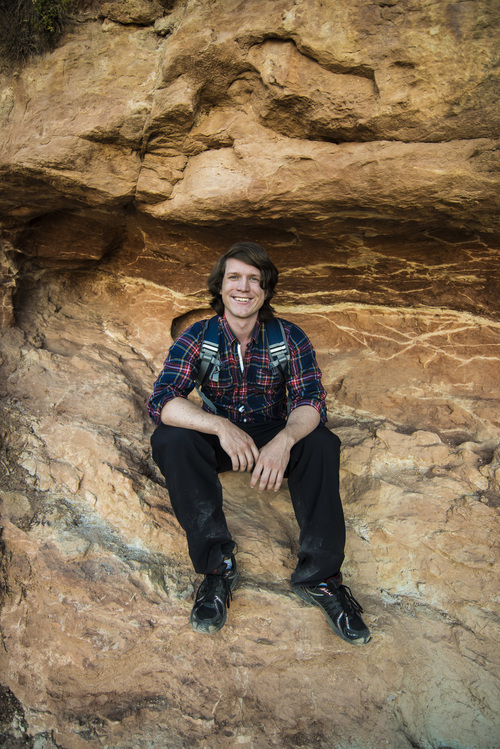
Krister Myrlønn, a landscape photographer from Bergen, Norway, and I became acquainted through a mutual friend, Madeline Farni.
I’ve known Madeline since she was a little girl. She and her three brothers grew up with my sons. Her mom, Ann, and I shared many a summer afternoon on their back porch, watching our kids swim in their backyard swimming pool. On many of those evenings, we’d sit next to one another as we watched our kids play baseball and football.
Ann moved in late winter of 2011 and Madeline followed her. And while Ann and I have kept in touch, Madeline and I, sadly, did not.
That is, until, December 2014, when Madeline and I became friends on Facebook. At about this time, I wrote a blog post on baking sandbakkels and krumkake, Norwegian delicacies I make at Christmastime.
Shortly afterward, Madeleine posted that she was “in a relationship” with Krister. Last year, Krister spent six months in the United States, mostly in Florida, where Madeline lives. In February 2015, he invited Madeline to visit Norway. She has just returned, saying how much she loved the country.
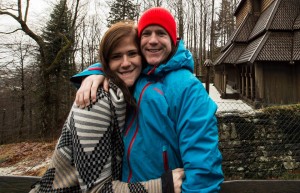
Madeline and Krister in front of a Norwegian stave church on Madeline’s first visit to Norway, February 2015
Krister and I became Facebook friends and struck up an online friendship. I don’t think he knew what he was in for when he befriended me. With Norwegian ancestry being in my family, I had some translation questions for him about some of my family’s documents, written in Norwegian. I will write about this in a future post but suffice to say that Krister happily obliged my poor Norwegian, helped to translate a document, and his helping me led to uncovering some fun genealogical surprises.
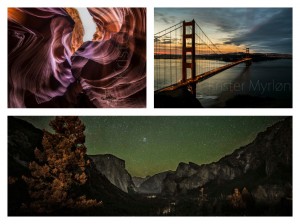
Krister Myrlønn’s Photography. Copyright by Krister Myrlønn | https://juliesaffrin.com Photos taken in October 2014 top left: Antelope Canyon, top right: Golden Gate Bridge bottom: Yosemite
Krister is an amazing landscape photographer. On his and Madeline’s “sea to shining sea” trip across the United States in the fall of 2014, his photographs captured beautifully the vast landscape of our country.
I feature my interview with him today so you can learn more about this photographer, see his work, both in printed photos as well as in created landscapes, and enter your name to possibly win his photograph of the San Francisco bridge. The photograph being given away in a drawing measures approximately 16½ by 11½ inches and truly is spectacular. (I know this, because I hold it in my possession for some lucky winner.)
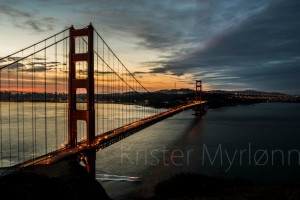
This is the photograph being given away to one lucky person who leaves a comment or question for Krister on his Web site www.kristermyrlonn.com. Random drawing will occur at 12:01 p.m. CST on March 15, 2015.
Should you like a chance to win this beautiful photograph taken by Krister, please go to his Web site at www.kristermyrlonn.com and leave a comment or a question for Krister to respond to. A random drawing for the photograph will be held on Sunday, March 15, 2015. Please make sure to leave your e-mail on Krister’s Web site as you comment so Krister or I can contact you, should your comment or question be the winning entry.
Krister’s Web site: www.kristermyrlonn.com
Krister’s Etsy Store: https://www.etsy.com/no-en/shop/KmVisualArts?ref=hdr_shop_menu
Facebook: http://www.facebook.com/myrlonn
Instagram: https://instagram.com/kristermy
Hi Krister, thank you so much for agreeing to this interview.
Thanks so much for having me, Julie, or, as we say in Norwegian,”Tusen takk for muligheten til å være her, Julie.”
You’re welcome, Krister. It is my pleasure. If I wanted to say this in Norwegian, what would I say?
Bare hyggelig, Krister. Det er en fornøyelse.
My Norwegian grandmother used to say “Tusen takk”. I have to say, I have so enjoyed getting to know you and and am so appreciative of your translating little remembered Norwegian phrases my grandmother and my dad used to say.
My pleasure, Julie.
Tell us a little about you and your family and what life is like in Bergen?
I live in Bergen with my parents, working two jobs and doing as much photography as I can, trying to save up what I can.
I have two siblings, both studying in different cities. There are a lot of outdoors activities all year, so there is always something to do. Bergen is surrounded by mountains, so every weekend you see many people on your way, if you choose to go out for a mountain hike.
Your English is excellent. How did you become so proficient at it?
Thank you, Julie. In Norway we start learning English very early in ground school, and we grow up watching a lot of American movies and TV series. I became more confident and comfortable speaking and writing English when I started school at the University in England, where all essays, presentations and meetings were in English. And with all this, I have ended up with an accent combination of Norwegian, American, and British. 🙂
When did you first develop an interest in photography?
In high school, I had media and communication as the main subject. We had different projects in journalism, design, radio and photography. I felt that photography was the project that I had the most fun with, starting with the very basic techniques in the classroom, and then just going outside to use what I had learned.
What was your first camera?
I received my first camera when I was about 11 or 12. It was a classic point-and-shoot “modern” film camera, with an electric winder. My first digital camera was a Nikon D40 with kit lenses. It is a great camera for those just getting into photography.
Where did you study photography?
After a year doing photography at a community college, I moved from Bergen to England to study BA (hons) Photography at Arts University Bournemouth. I graduated in 2013.
Is there someone in your past who encouraged you to be a photographer?
It has mostly been my tutors during studies who have helped me to go in the professional direction I was looking for.
Whose photography inspires you?
My biggest inspiration at the moment is Peter Lik with his amazing landscape shots from around the world. His details, elements, and compositions are absolutely great.
I just read that one of his photographs sold for $6.5 million. I’m liking your tastes!
Kim Keever is another inspiration with his fish tank surreal landscapes. Kim was a big inspiration on my work when I worked toward my bachelor’s degree. Kim is one of the reasons I started with constructing landscapes.
What are fish tank surreal landscapes? What is the process to create them?
I started working in fish tank landscapes after watching the work of Kim Keever. What makes them so special is that they can look like they are from a different world but still have relations and similarities to our own. This is where I made a connection to making dream worlds and looking into what Sigmund Freud has written in his book, Interpretation of Dreams. The process is simple. Find shapes that you recognize in the things around you and use them to create a landscape. You are the one who sets the boundaries of what you to construct or what you want the landscape to be of.
What is your favorite object to photograph?
Landscapes have really turned out to be what I most enjoy photographing. Sometimes it takes a lot of time to find the right location and set up the shot, but it is so worth it when you come home and you see that you really did well after a long day of both hiking and shooting.
What is your all-time favorite photo that you have taken?
My all-time favorite photo is one of my constructed landscapes. It looks like it is covered in snow with two trees standing up and a small river in between. It was one of my first constructed landscapes, and I thought it went really well. I worked with setting up everything for a few days and when I finally got to shoot, the photo turned out fantastically. I have tried to recreate something similar to it, but it’s just not the same.
Familiarize us with the term “constructed landscapes”.
A constructed landscape is made out of various materials. Moss, a ski bag, paint, food coloring, pieces of wood, stones, Q-tips–whatever you can come up with to create shapes.
Even though there are differences between the constructions of the landscapes, the ending result can often be very close to each other. The landscapes might be built with different materials for different reasons. The landscape can be constructed just like a dream based on our reality.
A constructed landscape has the opportunity to create and build upon our knowledge and experiences, to build upon our experienced events and memories, but still have some distance from reality. This allows those who create and interpret it to decide which direction the constructed landscape should take them in in their reality. Our mind perceives information and transforms it into a fantasy world in our dreams, where there are no boundaries except your own knowledge. In the same way as our mind we can build up a constructed landscape with our hands.
You write about this in your thesis. I like what you said about the difference between a framed photograph and a created landscape. To quote you, you wrote, “A framed photograph … create[s] a boundary that makes it appear as it continues past the borders.” And you go on to point out the difference of a created landscape is there is this possibility, as the mind perceives the created landscape, in seeing it as “being real.” This brings to mind the idea that with created landscapes one can almost “feel with their eyes,” and either reexperience a memory through the way the textures are constructed or to make that memory of place become reality again.
Digital construction of landscapes is one of the larger categories of landscape making, involving everything from 2D and 3D designing. By putting together multiple images from different archives there is boundless amounts of possibilities to create combinations of landscapes. With technology developed so far, we can design the landscapes exactly as we wish them to be, from the shapes of the clouds to the smallest detail of the texture of the trees. Sometimes, these works become so real, so close to our own reality that they sometimes are mistaken for a real photograph. The artist Juan Fontcuberta plays around with our perception of reality and has made several works where he combines the reality we see, turning it into something that is nothing like anything on earth, but the landscapes still look very believable as they very much relate to the surroundings that we have in our reality.
I can imagine an awful lot of time and effort go into creating landscapes. How do you compose the landscapes? Do you draw them out first or create as you go?
Sometimes I draw out sketches of how I plan to go on. This might change drastically as I work. Like with much other artwork, good things tend to happen when you experiment with your work and challenge it. The landscapes tend to take a very long time to make, all from 10 minutes to 500 hours’ worth of work. Ideas pop up everywhere, inspirations from the outdoors, movies, dreams and other people’s artwork. Inspiration is everywhere.
Here are some videos demonstrating Krister’s process of creating constructed landscapes.
https://vimeo.com/112421205 fish tank
Workflow landscapes from Krister Myrlønn on Vimeo.
https://vimeo.com/112426852 Tropical landscape
Workflow landscapes tropical from Krister Myrlønn on Vimeo.
What an amazing thing to watch these being constructed from start to finish.
Switching back to taking actual photographs, are there one or two tips you could share for the average person who uses his or her smart phone to shoot photographs?
There is much more to photography than just owning a fancy expensive camera. My advice for those who use their phone or point-and-shoot cameras is to take a look at what kinds of settings are available on the device and make the most out of them. Use composition by using the visual elements in your setting to create a visually-pleasing image. You can do this by using “the rule of thirds” where you, for example, have the foreground in one third of the image and the sky in the other two thirds, or the other way around. Use available lighting that you have around you, and use angles to your advantage. Be creative.
Where in Norway is your favorite location to photograph?
That’s really hard for me to say, I think it has to be Tromsø. I went up there on a trip a year ago. Tromsø is a small city far up in northern Norway, most famous for being one of the best places to see the northern lights in the winter. Tromsø is about a three-and-a-half-hour flight from Bergen. It’s a bit longer distance than from San Francisco to Seattle, but like driving from San Francisco would take you 12 hours, driving from Bergen to Tromsø would take you 27 hours. The mountains up there completely blew my mind! The mountains are not that tall, but they are very steep, which make them look even more powerful. I cannot wait to go up there again someday.
Norway seems such a magically beautiful place, did you find the United States somewhat boring a place, comparatively, to take pictures? Were there places in the states that fascinated you?
I did not find the U.S boring at all, but I have to say, if you are a landscape photographer who likes dramatic images, you can skip Florida! Stay away from the big cities and you will have a great time as a photographer, unless you are into the busy city life. Personally, I can’t stand it. Yosemite National Park is what really fascinated me. It is such a popular place with so many people passing through all year, but one can still get close to nature and wildlife. Yosemite is really a special place. I really want to go back but hope to go in the winter next time. I have wanted to go there for so many years and when I finally got to see everything there and get fantastic photos from there it was breathtaking.
Tell us about your photographs for sale. Should a person wish to purchase one in your Etsy store, how will the photograph arrive and what should a person in the U.S. expect for delivery time?
I am picky when it comes to how my pictures are presented. All photographs will be shipped in a cardboard cylinder, protected so the photograph will not shift in transit. I am shipping my products from Bergen so a person can expect a photograph within two weeks of a placed order.
For your chance to win this stunning photograph (watermark will not appear on the photograph sent to you), please go to Krister’s Web site at www.kristermyrlonn.com and leave a comment or a question you’d like him to answer. A random drawing will happen on Sunday, March 15, 2015 at 12:01 p.m. CST and the winner will be noticed so please do leave your e-mail contact information.
Thanks so much, Krister, for an awesome interview.
Thank you, Julie, for featuring me on your blog today. I look forward to reading comments left on my Web site and answering any questions they may have.
About Julie Saffrin
Julie Saffrin is the author of numerous published articles and essays. Her latest book, BlessBack: Thank Those Who Shaped Your Life, explores the power of gratitude and offers 120 creative ways to journey toward positive, lasting change.
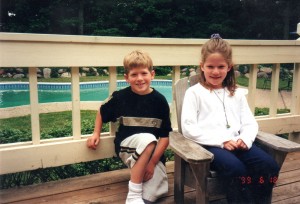
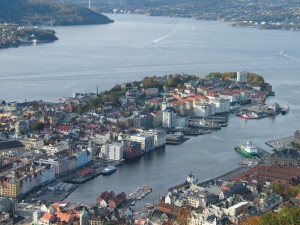

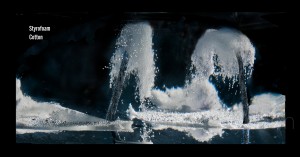
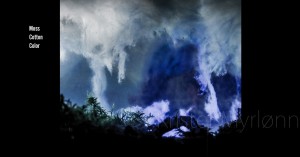
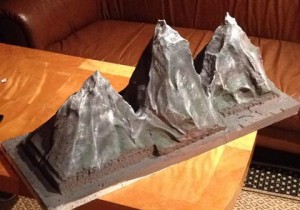
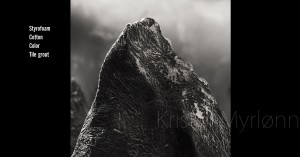
Fascinating photos! Krister has a unique eye for framing amazing and dramatic photos from landscapes. I love the texture and light play. His adventuresome approach to the world around him is captivating. I can’t wait to see where he takes his talent next!!
Thanks, Ann! I agree he is so talented. What a privilege for me to be able to interview him!
A true artist with an obvious passion for his craft and nature. A truly creative soul. I wish you much success and fulfillment in your future.